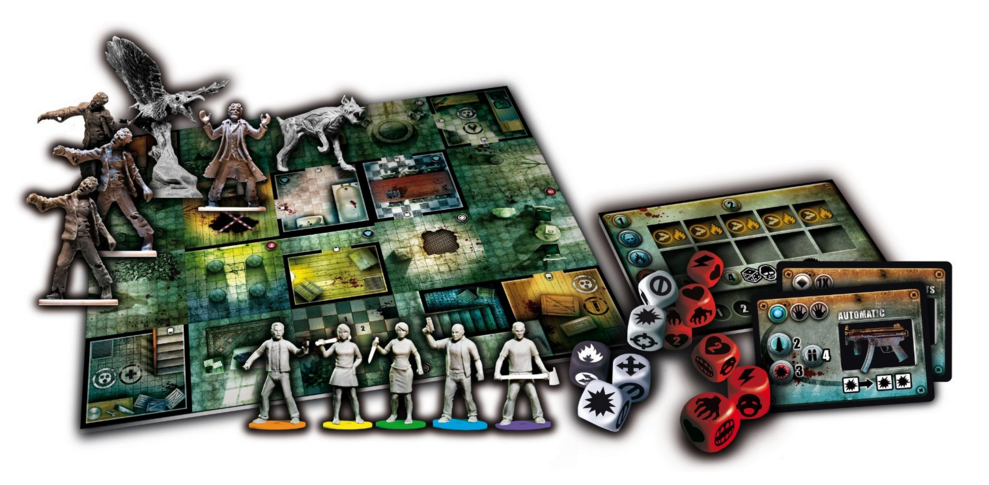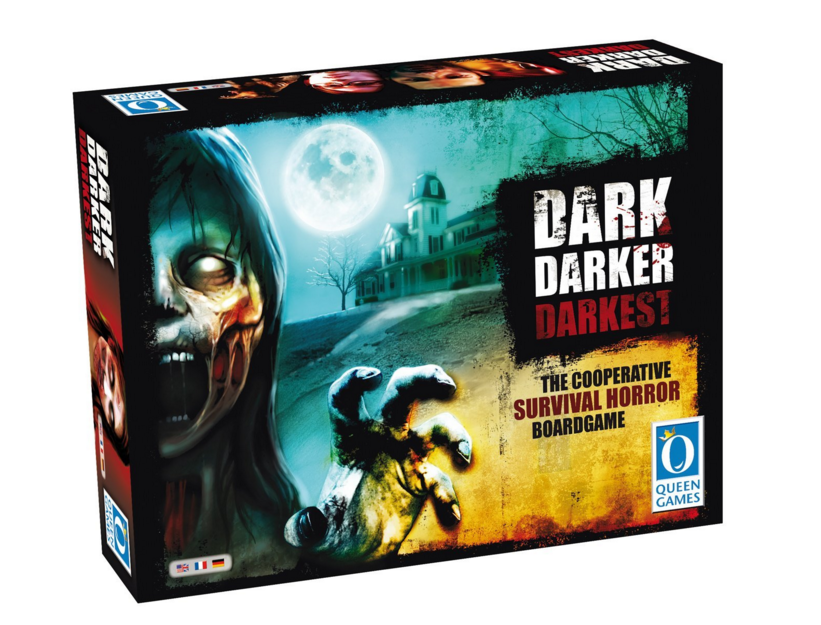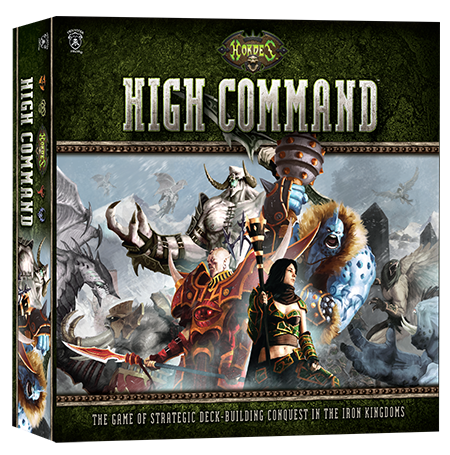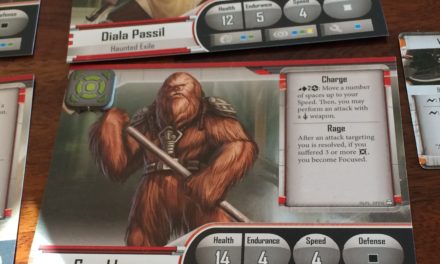Dark Darker Darkest by Queen Games was a Kickstarter game that we didn’t back, but found at a reasonable price on sale, probably at Miniatures Market. That’s our go-to site for gaming materials because the prices are usually great and shipping is free if you spend $100. With the price of most board games, spending $100 is a piece of cake.
This is a cooperative game where the players are supposed to find the code chips to unlock the door to the lab where the zombie infection started and defeat the scientist responsible. Think Resident Evil and you have the basic premise. The game does a good job of sticking to theme, with the player characters including a programmer and medic among others.
Unfortunately, that’s the best thing I can say about the game.
There was lot going on, which drew you out of the game to do the sort of record-keeping that bogs down a game. We spent a little over two hours playing one round of the game and more than half of that time was setup.
Setup is always going to be long the first time you play a game, but this was even longer than usual. Like many cooperative games, the first thing you do is create the game board from the tiles. Some games, like Zombicide, give you a list of scenarios and guide you to the tiles to use for each scenario.
Dark Darker Darkest Gameplay
Dark Darker Darkest has you randomly choose which tiles are included, so the game board can vary a lot. This is usually good for increasing a game’s replay value. In our play through, it led to frustration because the tiles themselves created only one path through the building to the lab.
You can view a demonstration of the gameplay here:
But the real frustration of this game was all the things going on. Each piece of equipment has one symbol on it for breaking the code into the lab. Those same symbols are used to open locked doors in the building. Like other games, you can search for equipment in a room, but once you find something in a room, you are done searching there. So, in the entry hall for example, one character might search and then fail the search role. Another character could search and the number of successes on his search role would equate to the number of items he could find there. But once one character has found something, even if it was only one item, the room cannot be searched again.
So, if the luck of your roll means you get one item, that’s it. Items serve two purposes: to help you with the defeating the zombies and other things in the building and helping you collect the code chips for unlocking the lab door.
The locked doors leading up to the lab contain the code chips you need to open the lab, but if you can’t get right equipment to open those early doors, you can’t gather the code chips. We discovered it could easily become problematic to find enough gear to give you the necessary symbols to open doors.
Once you get a door unlocked, the same code that unlocked the door is now available on a chip for you to use to unlock the lab door. Our board had five locked doors and three of them contained the code chips needed to unlock the lab door.

You can’t tell what code chip a door contains until you are one room away from it, so we ended up having to open all five locked doors to get the code we needed to open the lab door. Two of the doors we opened were out of the way and then proved to be useless, allowing the monsters time to build up and the board to gain an advantage.
Additionally, once a code chip is retrieved, it has to be taken to a deposit location in one of three corners of the building. The fourth corner is the lab. That means players must gather the items to open locked doors, randomly open those doors while searching for the ones that are part of the combination to the lab, and then return them to the corner rooms while fighting zombies and zombie animals.
The building also has security cameras so at the end of the players’ turns, the board gets to check to see if the scientist can see you. If he does, he sends more zombies after you. Zombies also spawn randomly at the end of each turn and on some event cards. The building can also catch fire and at the end of the turn the fire spreads. If you need to go through a room on fire, you either need firefighting equipment or you get burned.
The firefighting equipment is among the gear you can find while searching rooms. If too much of the building burns down, you lose. The game has a set number of turns before darkness falls and you lose. If the zombies kill you, you lose.
In our case, the one path through the building caught fire blocking our path back to put the code chips in the corner room, we faced a horde of zombies and ultimately, time ran out. Sometimes, in a cooperative game after the board wins, you’re immediate reaction is to want to play again, believing you just got a bad start or bad draw. In this case, our reaction was one of boredom and a little relief that the game had ended.
Ultimately, we felt like there was an incredible amount of random luck involved in whether the players could beat the game. Bad searches, bad luck on the random spreading of the fire, or even just bad tile selection in the game board set up can make it nearly impossible to defeat the game. And while some luck makes the game variable, when it’s all based on luck, the players end up feeling like nothing they did could have made a difference. That usually gets a game relegated to the get rid of pile.
Game play seemed tedious with the interruptions of trying to determine if you had the right code, if the cameras could see you and if you were facing down a horde of zombies. As much as we love zombie games, this one had too much other stuff happening. We decided it was not a keeper for us. When we want to play with zombies, we have better options that we enjoy more.
Final Analysis
Final analysis: We’re really glad we got this one on sale and didn’t back it on Kickstarter. We’re handing it off to someone else. Dark Darker Darkest is not a bad zombie game, but there are better games available. With limited game time available, we’ll choose Dead of Winter or Zombicide instead.
Have you played this game? Let me know what you thought about it in the comments!
Material disclosure: I have no material connection to the game reviewed and I did not receive a review copy.





